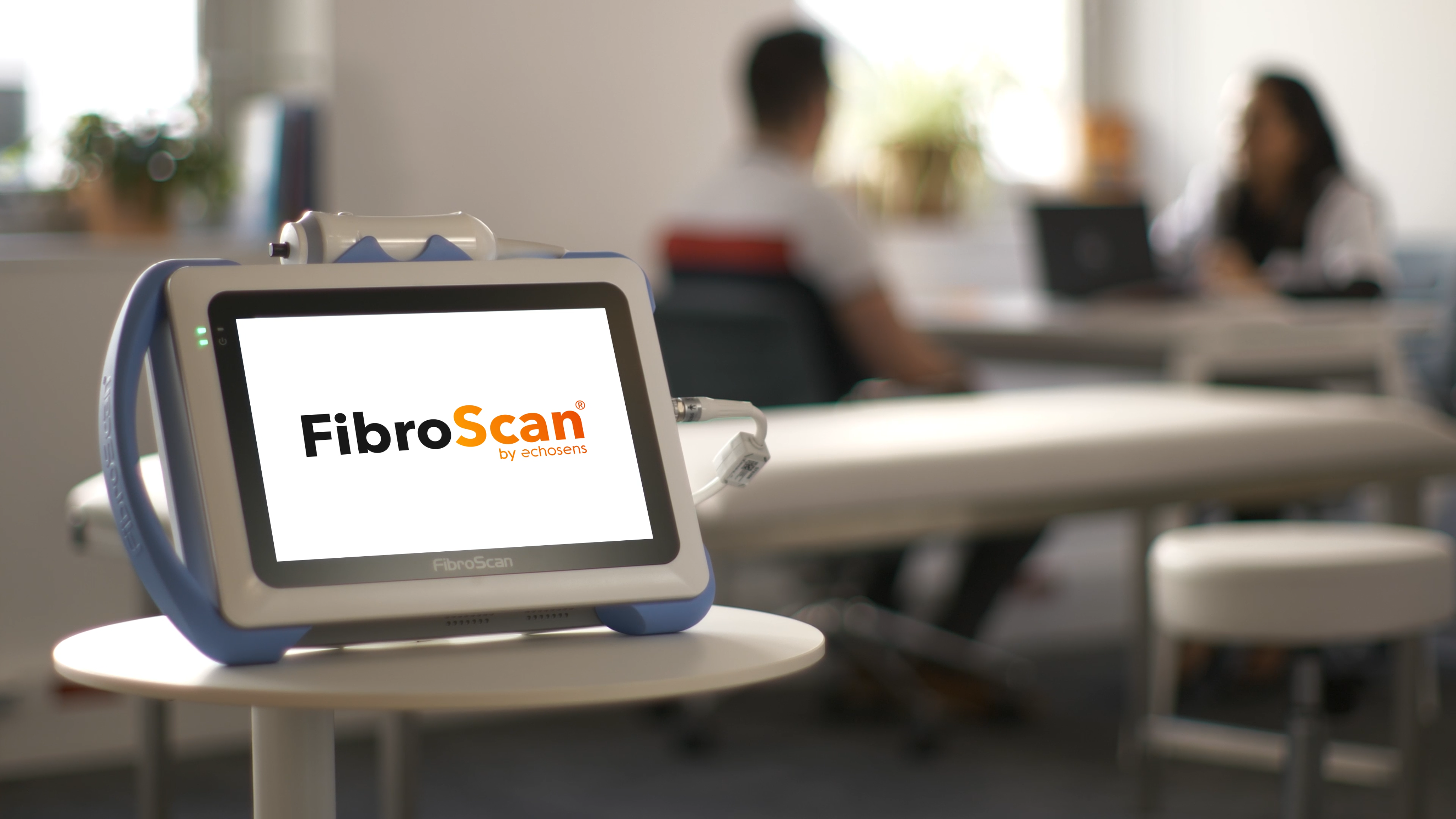Different Modalities of Elastography Yield Different Results
Elastography software modules are added to ultrasound systems. The two main modalities of ultrasound elastography are Acoustic Radiation Force Imaging (ARFI) or Shear Wave Elastography (SWE). These products employ a completely different operating principle than VCTE™ in FibroScan®. In clear terms, the ultrasound modalities do not measure the same phenomena in the same manner, which means that their values are not comparable. Independent societies, such as the American Gastroenterology Association has produced interpretation guidance for FibroScan® VCTE™, which do not apply to these other modalitiesI.
Image based modalities often rely more on the operator to determine the region of interest based on the images obtained. In addition, different manufacturers of ultrasound based elastography use different techniques to measure shear wave speed, resulting in slight to moderate differences in measurementsI.
The need for standardization of results and longitudinal consistency may have contributed to the much higher utilization of VCTE™ in clinical development for the NAFLD and NASH drugsII.
Evidence Matters: The Value of Quantification with FibroScan®
Most recently, Echosens has released the Fast™ Score. The Fast™ score is a probability of a patient having active Fibrotic NASH as defined by NASH plus a NAS score ≥4 and a fibrosis score of ≥2. This score was developed based on a 1,400 patient prospective study of suspected NAFLD, who were to undergo liver biopsy. Fast™ is composed of the liver stiffness by VCTE™ and CAP™ scores by FibroScan® combined with AST and represents a cost effective and scalable option to better risk stratify patients in point of care for clinical trials or treatmentIV.
Echosens patented Fast™ score, available through the MyFibroScan App
This score is being adopted as a pre-screening tool by many of the pharmaceutical companies developing drugs in Phase 3 and if successful, may become a standard when the drugs are commercialized. Fast™ and other FibroScan® based scores will be developed as non-invasive tools for diagnosing and monitoring results to therapy.
Unlike other modalities, only FibroScan has been included in over 2,300 scientific publications across all etiologies of liver disease, which supports the technique as a reference for non-invasive tests in the major Association guidelines, including those for viral hepatitis and NAFLD-NASHV. FibroScan, with its patented CAP™ measurement, simultaneously provides a quantitative estimate of liver fat content. The NASH CRN, a major research network for fatty liver trials, has developed intitial case definitions for CAP™ to assess liver fat content for clinical researchVI. This is a very important capability to support a NAFLD diagnosis and to assess response to current and future interventions.
Finally, FibroScan® offers a portable solution to addressing the growing prevalence of NAFLD. It is estimated that as many as 85MM Americans are affected by elevated liver fat, of which 7.2MM have NASH with advancing fibrosis. While most will not experience liver disease, most will be at risk for greater mortality and morbidity from cardiovascular disease. FibroScan has the ability to bring advanced technology to rapidly and non-invasively measure liver stiffness and fat to where patients receive care. This can lead to better risk stratification and monitoring of liver health and may result in improved outcomes from earlier intervention. In turn, this may reduce costs and improve patient and provider satisfaction.
FibroScan®: Intended Use / Indications for Use
The FibroScan® Family of Products (Models: 502 Touch, 530 Compact, and 430 Mini+) is intended to provide 50Hz shear wave speed measurements and estimates of tissue stiffness as well as 3.5 MHz ultrasound coefficient of attenuation (CAP™: Controlled Attenuation Parameter) in internal structures of the body.
FibroScan® Family of Products (Models: 502 Touch, 530 Compact, and 430 Mini+) is indicated for noninvasive measurement in the liver of 50 Hz shear wave speed and estimates of stiffness as well as 3.5 MHz ultrasound coefficient of attenuation (CAP™: Controlled Attenuation Parameter).
The shear wave speed and stiffness, and CAP™ may be used as an aid to diagnosis and monitoring of adult patients with liver disease, as part of an overall assessment of the liver. Shear wave speed and stiffness may be used as an aid to clinical management of pediatric patients with liver disease.
The Fast™ score calculator is a tool for clinicians to calculate the probability a patient with suspicion of NAFLD as having active fibrotic-NASH (NASH+NAS ≥4+ F≥2). The calculator takes into account LSM by VCTE™, CAP™ and AST, and was developed based on a prospective multicenter study and published in peer-reviewed literature. The Fast™ score and calculator are presented as an educational service intended for licensed healthcare professionals. While this score is about specific medical and healthcare issues, it is not a substitute for or replacement of personalized medical advice and is not intended to be used as the sole basis for making individualized medical or health-related decisions.
AST: Aspartate aminotransferase, which can be collected within 6 months of the examination with FibroScan®.
References:
i EFSUMB Guidelines and Recommendations on the Clinical Use of Liver Ultrasound Elastography, Update 2017.
ii Clinicaltrials.gov. Search for ARFI and/or SWE vs FibroScan among trials in NASH, NAFLD.
iv P N Newsome et al. “FibroScan based Fast™ (FibroScan-AST) score for the non-invasive identification of patients with non-alcoholic steatohepatitis (NASH) and significant activity and fibrosis: a prospective derivation and global validation study” Lancet Gastroenterology & Hepatology 2019 (in press).
v AASLD Viral Hepatitis & NASH, EASL/ESO/ESD NASH guidelines.
vi Siddiqui etal. Case Definitions for Inclusion and Analysis of Endpoints in Clinical Trials for Nonalcoholic Steatohepatitis Through the Lens of Regulatory Science, Hepatology Special Article, 2017. ™
